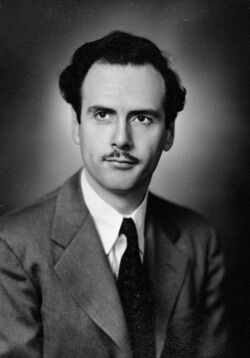Marshall McLuhan (nonfiction): Difference between revisions
No edit summary |
No edit summary |
||
| Line 37: | Line 37: | ||
[[Category:Nonfiction (nonfiction)]] | [[Category:Nonfiction (nonfiction)]] | ||
[[Category: | [[Category:Communication (nonfiction)]] | ||
[[Category:Marshall McLuhan (nonfiction)]] | [[Category:Marshall McLuhan (nonfiction)]] | ||
[[Category:People (nonfiction)]] | [[Category:People (nonfiction)]] | ||
[[Category:Writers (nonfiction)]] | [[Category:Writers (nonfiction)]] | ||
Revision as of 15:19, 22 April 2023
Herbert Marshall McLuhan, CC (July 21, 1911 – December 31, 1980) was a Canadian professor of English, philosopher of communication theory and a public intellectual.
His work is viewed as one of the cornerstones of the study of media theory, as well as having practical applications in the advertising and television industries.
He was educated at the University of Manitoba and Cambridge University and began his teaching career as a Professor of English at several universities in the U.S. and Canada, before moving to the University of Toronto where he would remain for the rest of his life.
McLuhan is known for coining the expressions "the medium is the message" and "global village", and for predicting the World Wide Web almost thirty years before it was invented.
Although he was a fixture in media discourse in the late 1960s, his influence began to wane in the early 1970s.
From The Gutenberg Galaxy:
Until more than two centuries after printing nobody discovered how to maintain a single tone or attitude throughout a prose composition.
In the News
John Killian Houston Brunner circa 1967.
Fiction cross-reference
Nonfiction cross-reference
- John Brunner (nonfiction)
- [https://en.wikipedia.org/wiki/Howard_Gossage Howard Gossage} - Howard Luck Gossage (1917–1969), "The Socrates of San Francisco," is credited with introducing Marshall McLuhan to media and corporate leaders, thereby providing McLuhan his entry into mainstream renown.
External links
- Marshall McLuhan @ Wikipedia
- The medium is the message @ Wikipedia
- [] @ YouTube

